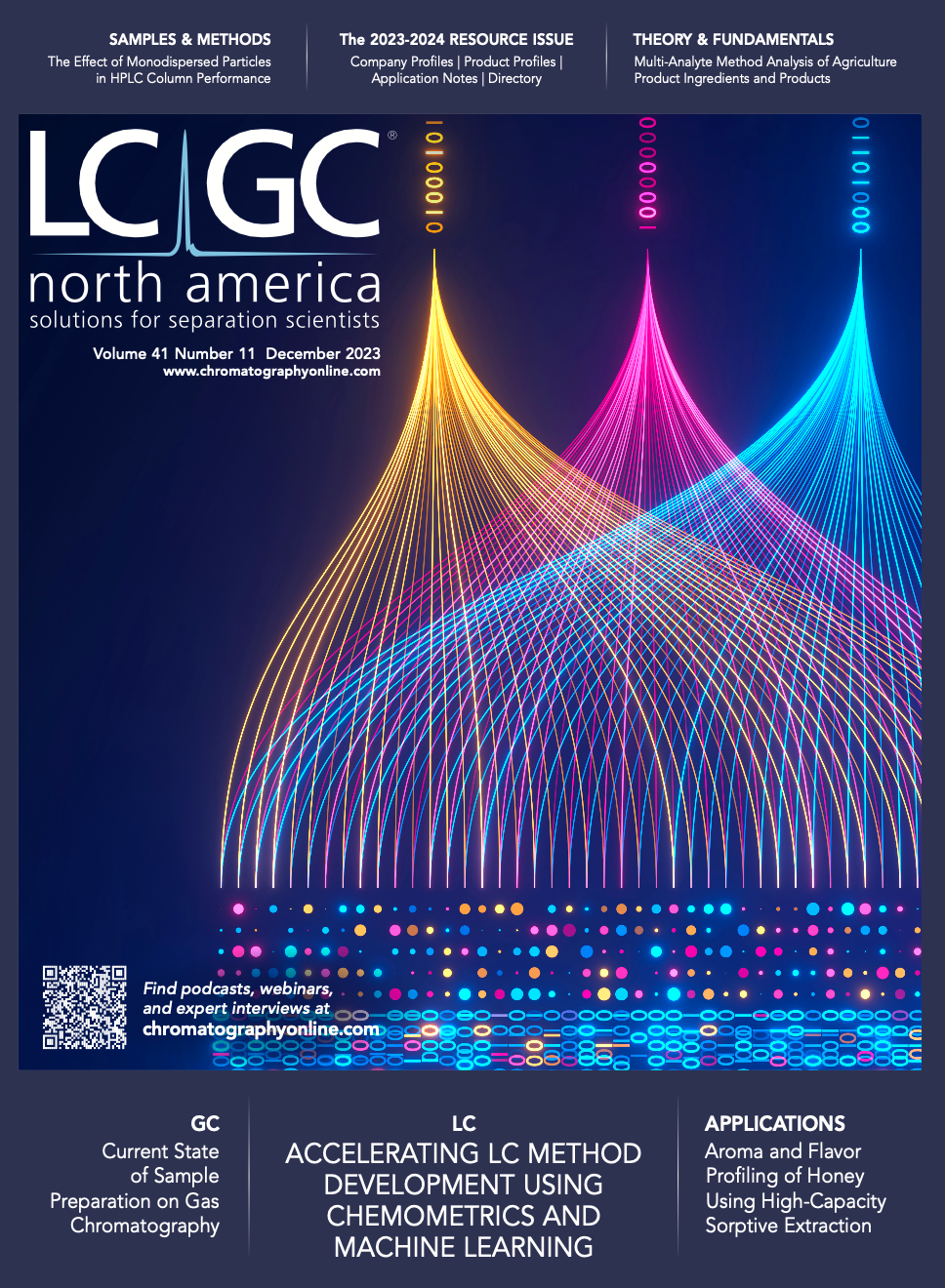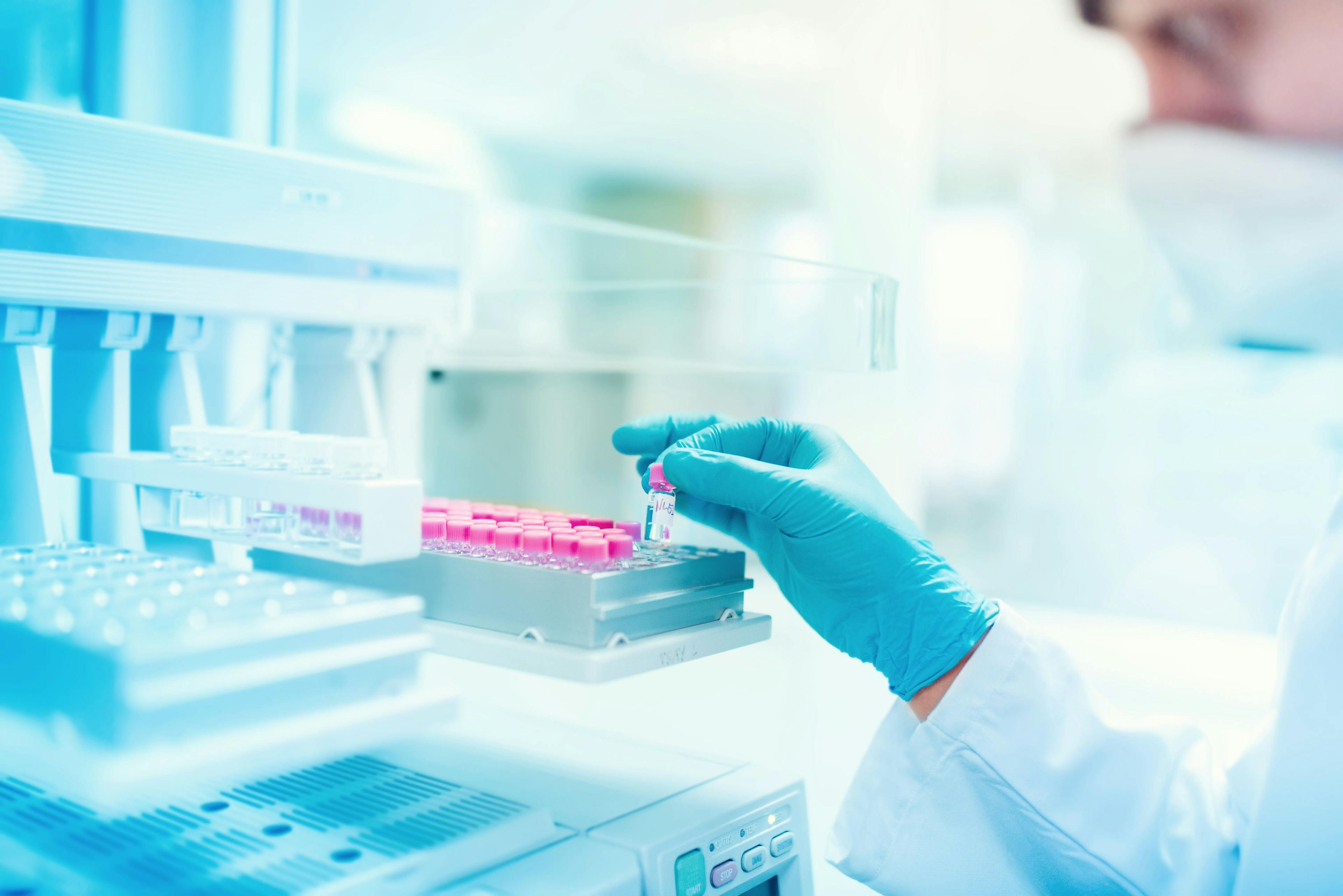Troubleshooting Odds and Ends to Close Out 2023: Questions from the Mailbag, and Second Opinions
Similar to Stephen Covey’s “Seven Habits of Highly Effective People,” effective troubleshooters take a systematic approach to liquid chromatography (LC) troubleshooting and rely on several key principles to help them navigate the complex task of troubleshooting. In this installment I add to this list of principles described in prior installments with three specific ideas: 1) Ask—does it make sense?; 2) Get a second opinion; and 3) Join a chromatography discussion group to help grow your chromatography network.
As 2023 comes to a close, I’ve been reflecting a bit on the problems with instrumentation that I’ve encountered this year, both through messages from folks in my professional network who ask me troubleshooting questions, and in my own laboratory. In the process of thinking about these various problems, a few themes have emerged, and I think it is worthwhile sharing them here because—at least on the timescale of a career spent working with instruments—they are relevant to all of us at some point. I’m a big fan of systems—systems-based approaches to tackling complex problems, and a systematic approach to problem solving. Maybe this is the training I had as a young scientist rubbing off on other parts of my work, but I think a systematic approach to liquid chromatography (LC) troubleshooting is very valuable because it leaves us with “results” that we can interpret and use to inform rational next steps in the troubleshooting process. If we don’t follow a systematic approach, the only tool we have at our disposal is a trial-and-error approach, which is usually frustrating, and it can also be very expensive. In this installment, I elaborate on this point using troubleshooting cases I’ve encountered this year to emphasize important things to keep in mind, including getting a second opinion and the value of a robust professional network.
In the October 2020 installment of “LC Troubleshooting,” I wrote about some essential principles of effective troubleshooting (1), referring to a manual developed by the U.S. Army that provides an introduction to logical troubleshooting (2). The list of principles included:
- Change one thing at a time
- Do no harm
- Drawers are not repair centers
- Build up knowledge about expected behavior
- Documentation helps in the long run
- Know when to ask for help
In this installment, I’d like to extend this list with two additional ideas:
7. Does it make sense?
8. Get a second opinion
Developing troubleshooting habits based on these principles can lead to more effective and efficient troubleshooting over time, reduce stress over instruments that don’t work, and lead to significant savings in the cost of instrument operation.
Does It Make Sense?
A few troubleshooting cases this year have highlighted the importance of asking a basic question when considering potential causes of instrument malfunction, and potential solutions—does it (that is, the cause or solution) make sense? Part of what makes troubleshooting most analytical instrumentation challenging is that there are so many ways for things to go wrong. Given all these possibilities, it is also not hard to come up with a pretty long list of potential causes and solutions. Moreover, it is typically prohibitively expensive to actually evaluate all the potential causes and solutions in the laboratory. Thus, it is exceedingly important to critically evaluate each of them so that we can prioritize which ones from the list we will actually evaluate. Prioritizing the wrong possibilities can lead to a lot of wasted time, effort, and money working through the causes that are unlikely to be the real problem, and the solutions that are unlikely to work.
So, how do we actually evaluate the potential causes and solutions? I guess as individual troubleshooters we either need to have the expertise and knowledge needed to critically evaluate the causes and solutions, or we need to seek out the expertise and knowledge from other individuals or sources. As I often say to my students, in 2023 the question is not whether information on a particular topic exists, but rather discerning which information is “good” (as in correct, accessible, and approachable), or “bad.” Determining which troubleshooting advice is good or bad can be tricky, especially if it comes from a source unfamiliar to us. At a minimum, though, we can ask a simple, yet powerful question—does it make sense? A couple of months ago when I was playing around with ChatGPT, I asked it some LC troubleshooting questions. For example, I asked it: “What should I do if the pressure on my HPLC instrument is too high?” Some of the responses made good sense, including: 1) “Check the column: Make sure that the column is properly installed and has not been damaged. Check for any clogs or debris in the column that may be causing the pressure to increase”; and 2) “Check the flow rate: Verify that the flow rate is within the recommended range for the column and the instrument. If the flow rate is too high, it can cause increased pressure.” On the other hand, some responses did not make sense at all. For example: “Check the detector: Verify that the detector is properly calibrated and functioning correctly. If the detector is not calibrated correctly, it can cause increased pressure.” This simply has no basis in reality. How could calibration of a detector affect the pressure drop in an LC system? In this case, I would not seriously consider evaluating this potential cause of my pressure problems, and move on to other possibilities instead.
Another real-life troubleshooting example from the mailbag will help illustrate the value of asking—does it make sense? Earlier this year, a PhD chemist with considerable experience in LC reached out to me about a problem with a pump that had been elusive. They explained to me that the main symptom they observed was bubbles in the waste line of the pump during purging, and that after purging, the pump would slowly lose pressure to the point where the pump was unusable. They also indicated that the pump vendor suggested that the cause of these symptoms was that their method involved a high concentration of a commonly used organic solvent (and not tetrahydrofuran [THF], by the way). My first reaction upon hearing the facts of the case was that the stated cause of the symptoms simply did not make any sense. I could not imagine any physically- or chemically-based line of reasoning that would lead to this explanation. Although the suggested cause of the problem could possibly have been correct, it seemed improbable, and there would be many other explanations that I would put on a list before the one that was suggested. In the end, after further investigation, it turned out that the actual cause of the bubbles was that the pump head was so loose that it was drawing air into the pump head from the back, and then pushing that air out of the head, which manifested as bubbles in the waste stream.
Get a Second Opinion, Particularly if the Fix is Going to Be Expensive
On two separate occasions in the past year, a troubleshooting exercise I’ve participated in has led to the conclusion that a very expensive repair would be required involving the replacement of an electronic board. In each case, the troubleshooting process was guided remotely by a person very knowledgeable about the particular instrument. In the first instance, I contacted a different person I knew that had intimate knowledge of the instrument, purely on a hunch that we should double-check to be sure we were not overlooking a different explanation for the cause of the symptoms. Indeed, the second person suggested a completely different potential cause, and it turned out that resolving this problem, which was entirely software-related, resolved the root cause and we did not have to replace any parts at all! Having had this experience, it was natural for me to seek a second opinion again a few months later when we encountered a different set of symptoms with the same instrument. Again, the suggested remedy was replacement of a very expensive electronic board. As in the first case, a second expert on the instrument suggested a different line of inquiry that ultimately concluded in finding that the observed symptoms were software-related and could be addressed at the level of the software, rather than replacing electronic components of the instrument.
No troubleshooter I know has a perfect track record, and sometimes the best of us misdiagnose. The point here is not that I think we can completely eliminate those mistakes and oversights. Rather, the lesson I’ve learned from these troubleshooting exercises is that if the conclusion of the exercise is that I’m going to spend a lot of time and money on a repair, then I will always get a second opinion moving forward. Much like it is common to get second opinions on health matters in cases where the suggested intervention is going to be painful, expensive, or both, we should also feel comfortable reaching out for a second opinion in cases of troubleshooting complex instrumentation where there is high potential for misdiagnosis and painful and expensive repairs.
Professional Networks Hold Tremendous Value—Grow Yours, and Use It to Help You Troubleshoot
I live in the upper Midwestern state of Minnesota in the United States, and we have a local (regional) professional organization for chromatographers and those with some affinity for chromatography called the Minnesota Chromatography Forum (MCF). I have been involved with MCF in various ways for approximately 20 years, but currently I chair the Symposium and Educational committees. At our most recent board meeting, we were discussing the trajectory of the organization and related factors including a lot of turnover in membership as we see long-time members retire, and many new people coming into the field. We also discussed how the Covid-19 pandemic has or has not affected how scientists and their employers interact with an organization like MCF. At one point during the discussion one of the board members asked rather pointedly—what is our response to people who ask what is the value of membership in MCF? In other words, why should they bother joining and regularly attend MCF events (typically three quarterly meetings and an annual symposium, in our case)? I think this is a fair question, especially in 2023, post-pandemic, in a time when it seems increasingly likely that people turn more to AI tools like ChatGPT for answers rather than consult the historical sources of expertise, such as books and expert sources like LCGC magazine. However, as I thought about the question after our board meeting, alongside of my thoughts about this installment of LC Troubleshooting, it occurred to me there is a deep and important connection here. A big reason to join a chromatography discussion group is that it can be a really efficient way to grow your professional network, and a network of 10, or 30, or 100 chromatographers that you can reach out to at the drop of a hat to get some troubleshooting advice is invaluable. Just think about this—an annual membership in the MCF costs a whopping $25. This fee buys you admission to quarterly MCF meetings where you get to know tens of other chromatographers in the area. There is a good chance that one of them will have good advice when you encounter the next problem with your LC instrument that you can’t answer. If their advice saves you from a single visit by a service engineer, this will probably save you or your employer enough money to pay for a lifetime membership in the MCF.
On a related note, recently Dr. Jim Grinias and I interviewed Dr. Kevin Schug for LCGC’s podcast Analytically Speaking (www.chromatographyonline.com/analytically-speaking-podcast). I like to finish these conversations with some quick, light questions, and one of them is: “If you could wave a magic wand and solve any problem in your laboratory, what it would it be?” Kevin’s answer (paraphrasing here) was that he would wish to have service contracts for all the instruments in his laboratory. As an academic researcher (Kevin is at the University of Texas at Arlington), instrument maintenance is an acute, persistent challenge because the organizations we typically seek funding from (as well as our host institutions), such as corporate sponsors and governmental agencies, are not fond of paying for instrument maintenance. My point in bringing this up here is that in laboratories where funds for service contracts simply are not available, having a professional network to lean on for troubleshooting advice (and sometimes even loaning instrument parts!) is very valuable.
What Other Chromatography Discussion Groups Are There?
I don’t have a comprehensive list of chromatography discussion groups around the world, but a considerable number of groups in the United States are listed at the SIS website: www.sisweb.com/referenc/sites/chmtgrop.htm. Some of the groups I have personally interacted with over the years are the Chromatography Forum of the Delaware Valley (CFDV; www.cfdv.org), the North Jersey Chromatography Discussion Group (www.njcg.org), and CASSS (www.casss.org). I especially encourage young scientists and new users of chromatography to find a discussion group and start building a network of separation scientists that they can reach out to in the future for troubleshooting or other professional advice.
Summary
In this installment of “LC Troubleshooting,” I’ve discussed some habits and practices that can improve the effectiveness and efficiency of any troubleshooter. These include asking the question “does it make sense?” when considering the potential causes of a problem with an LC instrument, as well as potential solutions to solve the problem. Also, increasingly, I think that getting a second opinion on a diagnosis of an instrument problem is a good idea, especially when the solution that is suggested to solve the problem is expensive, intrusive, or both. Finally, I strongly encourage chromatography users to engage a local chromatography discussion group as a way of building a professional network of separation scientists. These networks are great resources for us to call upon when troubleshooting a specific LC problem, or looking for a second opinion.
References
(1) Stoll, D. R. Some Essential Principles of Effective Troubleshooting. LCGC North Am. 2020, 38 (10), 505–509.
(2) Introduction to Logical Troubleshooting, 1996. https://www.militarynewbie.com/wp-content/uploads/2013/11/US-Army-electronics-course-Introduction-to-Logical-Troubleshooting-IT0338.pdf (accessed 2020-09-07).
ABOUT THE COLUMN EDITOR
Dwight R. Stoll is the editor of “LC Troubleshooting.” Stoll is a professor and the co-chair of chemistry at Gustavus Adolphus College in St. Peter, Minnesota. His primary research focus is on the development of 2D-LC for both targeted and untargeted analyses. He has authored or coauthored more than 75 peer-reviewed publications and four book chapters in separation science and more than 100 conference presentations. He is also a member of LCGC’s editorial advisory board. Direct correspondence to: LCGCedit@mmhgroup.com


Polysorbate Quantification and Degradation Analysis via LC and Charged Aerosol Detection
April 9th 2025Scientists from ThermoFisher Scientific published a review article in the Journal of Chromatography A that provided an overview of HPLC analysis using charged aerosol detection can help with polysorbate quantification.
Removing Double-Stranded RNA Impurities Using Chromatography
April 8th 2025Researchers from Agency for Science, Technology and Research in Singapore recently published a review article exploring how chromatography can be used to remove double-stranded RNA impurities during mRNA therapeutics production.














